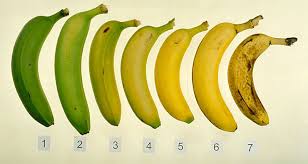
Breaking News
 Why Venezuela's Oil Matters So Much | The Hidden History Behind the Crisis
Why Venezuela's Oil Matters So Much | The Hidden History Behind the Crisis
 IRANIAN PROTESTERS BROKE GATES OF AYATOLLAHS' COMPOUND IN FARS PROVINCE
IRANIAN PROTESTERS BROKE GATES OF AYATOLLAHS' COMPOUND IN FARS PROVINCE
 'Sounds good to me': Trump suggests Rubio as Cuba's president, issues warning
'Sounds good to me': Trump suggests Rubio as Cuba's president, issues warning
 Trump asked US special forces to plan Greenland invasion,...
Trump asked US special forces to plan Greenland invasion,...
Top Tech News
 World's most powerful hypergravity machine is 1,900X stronger than Earth
World's most powerful hypergravity machine is 1,900X stronger than Earth
 New battery idea gets lots of power out of unusual sulfur chemistry
New battery idea gets lots of power out of unusual sulfur chemistry
 Anti-Aging Drug Regrows Knee Cartilage in Major Breakthrough That Could End Knee Replacements
Anti-Aging Drug Regrows Knee Cartilage in Major Breakthrough That Could End Knee Replacements
 Scientists say recent advances in Quantum Entanglement...
Scientists say recent advances in Quantum Entanglement...
 Solid-State Batteries Are In 'Trailblazer' Mode. What's Holding Them Up?
Solid-State Batteries Are In 'Trailblazer' Mode. What's Holding Them Up?
 US Farmers Began Using Chemical Fertilizer After WW2. Comfrey Is a Natural Super Fertilizer
US Farmers Began Using Chemical Fertilizer After WW2. Comfrey Is a Natural Super Fertilizer
 Kawasaki's four-legged robot-horse vehicle is going into production
Kawasaki's four-legged robot-horse vehicle is going into production
 The First Production All-Solid-State Battery Is Here, And It Promises 5-Minute Charging
The First Production All-Solid-State Battery Is Here, And It Promises 5-Minute Charging
 See inside the tech-topia cities billionaires are betting big on developing...
See inside the tech-topia cities billionaires are betting big on developing...
Green vs. yellow bananas: How ripeness impacts gut health, blood sugar and cancer risk

While Big Food pushes sugary, processed snacks, nature's perfect portable food offers a spectrum of benefits depending on ripeness. But which is truly the healthiest? The answer may surprise you.
Green bananas, often overlooked in favor of their sweeter, yellow counterparts, are packed with gut-healing resistant starch and fiber. Ripe bananas provide quick energy and antioxidants, while overripe ones are gentlest for sensitive stomachs. Even more startling? A groundbreaking study reveals green bananas may slash cancer risk by over 60% in high-risk individuals. Here's the science-backed truth.
The ripening process: A nutritional transformation
Bananas undergo dramatic biochemical changes as they ripen. "Ripening is genetically programmed and includes biochemical and physiological changes, which result in the transformation in taste, texture, and smell," explains Rachel Gargano, chief registered dietitian at Live It Up. Enzymes like amylase break down starch into sugars, softening the fruit and increasing sweetness. But this process also alters how the body metabolizes bananas, impacting blood sugar, digestion, and even disease prevention.
While vitamins (like potassium and B6) remain stable, the starch-to-sugar ratio shifts dramatically. Green bananas contain up to 80% resistant starch, while overripe bananas are nearly all sugar. This isn't just about taste; it's about how your body uses fuel.
Green bananas: The gut-healing, cancer-fighting powerhouse
Unripe bananas are a staple in traditional diets worldwide, often cooked like vegetables. Their high resistant starch content acts as a prebiotic, feeding beneficial gut bacteria. "Due to the high fiber intake, an unripe banana is going to be most beneficial for digestion," says registered dietitian Courtney Pelitera. "It helps promote regular bowel movements and improve the gut microbiome."
But the benefits go further. A 2024 Japanese study found women eating two bananas daily saw improved gut health markers. Even more compelling? A UK study published in Cancer Prevention Research revealed that resistant starch equivalent to one green banana daily reduced upper gastrointestinal cancers by 60% in Lynch syndrome patients. "We found that resistant starch reduces a range of cancers by over 60%," said Professor John Mathers, a nutrition expert at Newcastle University. The effect lasted a decade after participants stopped the regimen.

 Storage doesn't get much cheaper than this
Storage doesn't get much cheaper than this

